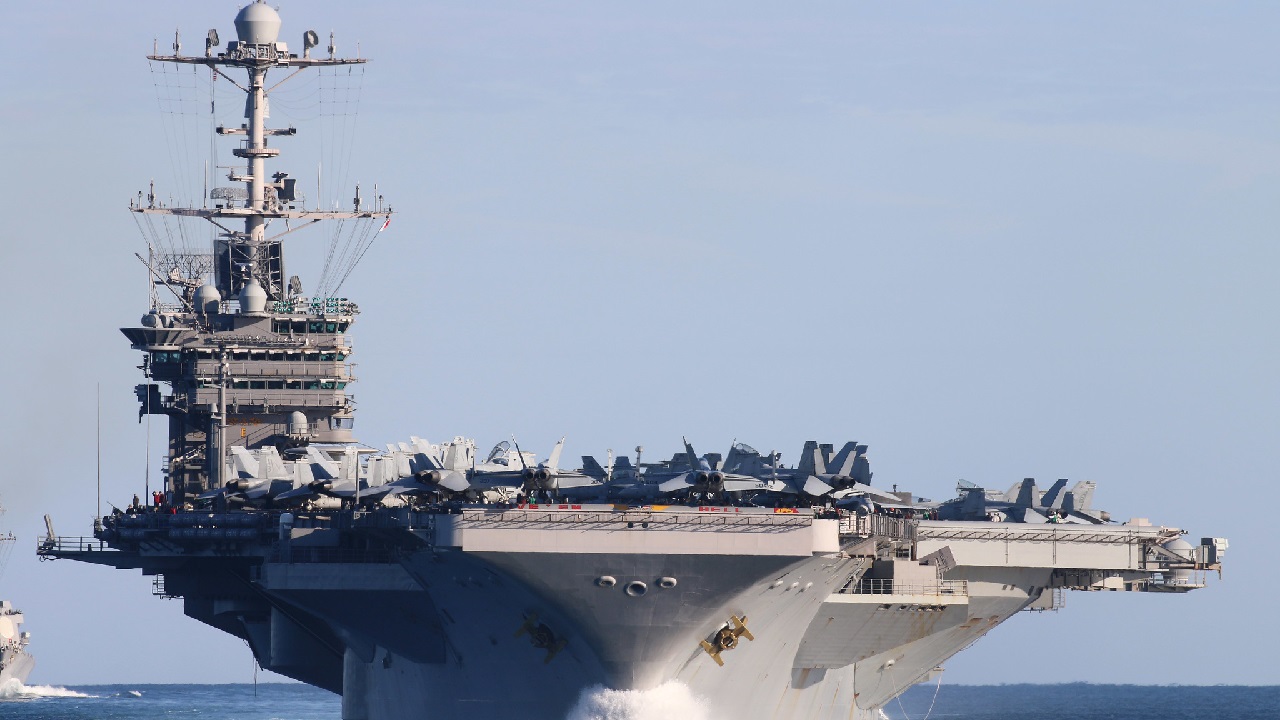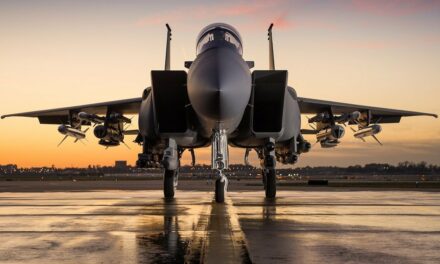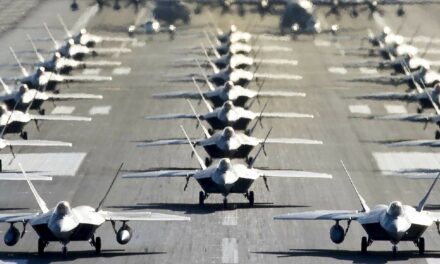We support our Publishers and Content Creators. You can view this story on their website by CLICKING HERE.
What You Need to Know: The U.S. Army should adopt lessons from Yemen’s Houthi militants, whose innovative use of long-range precision missiles and cheap drones has effectively denied sea access in the Red Sea. The Army’s Strategic Mid-Range Fires (SMRF) program and Multi-Domain Task Forces (MDTFs) are well-suited for applying similar tactics in the Western Pacific against China.
221227-N-DU622-1227 PHILIPPINE SEA (Dec. 27, 2022) An F/A-18F Super Hornet from the “Fighting Redcocks” of Strike Fighter Squadron (VFA) 22 prepares to launch from the flight deck of the aircraft carrier USS Nimitz (CVN 68). Nimitz is in 7th fleet conducting routine operations. 7th Fleet is the U.S. Navy’s largest forward-deployed numbered fleet, and routinely interacts and operates with 35 maritime nations in preserving a free and open Indo-Pacific region. (U.S. Navy photo by Mass Communication Specialist 2nd Class Justin McTaggart)
-By deploying dispersed, shore-based systems equipped with PrSMs, SM-6s, and offensive drones, the Army can create operational dilemmas for adversaries, contributing to integrated deterrence.
-Adding strategic mobility through airlifters and allied interoperability further enhances survivability and lethality in contested environments.
How Drones and Missiles Could Transform U.S. Army Strategy in Asia
The US Army should consider borrowing a page from the playbook of Yemen’s Houthi militants.
The character of war is always changing, and the Houthis’ ongoing attacks against shipping in the Red Sea may prove to be one of the more significant inflection points in military history.
The change involves sea control and sea denial through the application of long-range precision missile fire and autonomous drone employment from the shore. The Houthis effectively blend a mix of anti-ship ballistic missiles, cruise missiles and one-way attack drones to contest control over maritime lines of communication in the Red Sea littoral. They have so far damaged at least 30 merchant ships, sunk two and killed or detained several merchant sailors.
The US Army should aim for much the same capability in a contested littoral environment against an adversary such as China. Technically and tactically, the service is moving in this direction, but it needs to fully embrace the strategy to avoid becoming largely irrelevant in the major war in which the US is most likely to become involved. Army heavy formations almost certainly won’t be available in the initial fighting in a Western Pacific war.
The army can draw on efforts that are already underway in the US military. It can, for example, take inspiration from the US Navy’s Distributed Maritime Operations (DMO) concept, in which ships are widely separated but act in unison. Army units might operate similarly in the Western Pacific.
The navy is developing DMO for forces that find themselves in combat against an adversary, such as China, that can detect, track and attack US and allied assets at great distances with a variety of different weapon systems.

The aircraft carrier Harry S. Truman (CVN 75) participates in a composite unit training exercise (COMPTUEX). Truman is underway as a part of the Harry S. Truman Carrier Strike Group (HSTCSG) performing COMPTUEX, which evaluates the strike group’s ability as a whole to carry out sustained combat operations from the sea, ultimately certifying the HSTCSG for deployment. (U.S. Navy photo by Mass Communication Specialist 2nd Class Tommy Gooley/Released)
The army’s own Typhon or Strategic Mid-Range Fires (SMRF) program, in which it is fielding its Precision Strike Missiles (PrSMs) and navy SM-6 and Tomahawk missiles for strike missions, should contribute, as should research into drone technology by the Defense Advanced Research Projects Agency (DARPA).
In a maritime war in the Western Pacific, the army would likely have to operate on distant island bases and attack shipping in much the same way the Houthis are doing from the interior of Yemen. Geographic dispersal will be a vital aspect of survivability in the next war.
The SMRF program is already well adapted for shore-based sea control operations. So is the army’s new Multi-Domain Task Force (MDTF), in which units are tailored to specific theatres for long-range precision effects, including cyber, electromagnetic warfare and precision strike using weapons systems like PrSM and SM-6.
The army should apply the DMO concept to SMRF-equipped MDTFs and deploy them on bases outside the First Island Chain, the string of islands from Japan to Indonesia that hems in China.
This forward presence would contribute to integrated deterrence by forcing the Chinese military to cope with multiple operational dilemmas. It would, for example, have to track multiple distant targets simultaneously and defend against firing batteries distributed across the Western Pacific. Those batteries would demand attention because they’d have the range and lethality to strike and destroy high-value targets throughout the region.
A key aspect of Houthi operations has been the use of one-way attack drones—in effect propellor-driven cruise missiles that are extremely cheap and numerous, presenting unsustainable economic challenge, given the cost of defensive interceptors like SM-2s and SM-6s. Here too, the US Army can learn from the Houthis and adapt to use similar tactics. DARPA’s work, for instance, on offensive swarming drones will be a vital advance in how US thinks about and executes offensive maritime operations and sea control or denial.
To Houthi tactics, add strategic mobility. Here, the utility of the US Air Force’s heavy airlifters comes into play. They can deploy ground units almost anywhere that has even a rough airfield, greatly reinforcing the army’s ability to participate in an island-based maritime war. US and allied exercises should routinely practice rapid loading and unloading of systems such as HIMARS missile launchers on and off C-130 Hercules cargo aircraft.
A valuable effect of such exercises would be honing interoperability between US services and between them and allied militaries. Indeed, highly capable US allies, such as Australia, should play a major role in how the US Army and broader joint forces think about fighting in the Western Pacific.
The US Army and allied forces can achieve a war-altering advantage if they learn from and apply the Houthi tactic of controlling the sea from the shore with inexpensive drones and long-range precision strike weapons and if they blend this technique with air mobility.
The Houthis are unlikely teachers but teachers nonetheless. Houthi operations have demonstrated that shore-based sea control and sea denial can be highly effective. They have shown how the US Army and US partners and allies should incorporate new tactics and weapons systems into their forces before the next war comes.
About the Author
Andrew Rolander is an irregular warfare and strategic competition analyst. He is particularly interested in maritime strategy and security. The views expressed in this article are those of the author and do not reflect the official policy or position of the US Department of Defense or the US government. This first appeared in ASPI’s the Strategist.

 Conservative
Conservative  Search
Search Trending
Trending Current News
Current News 





